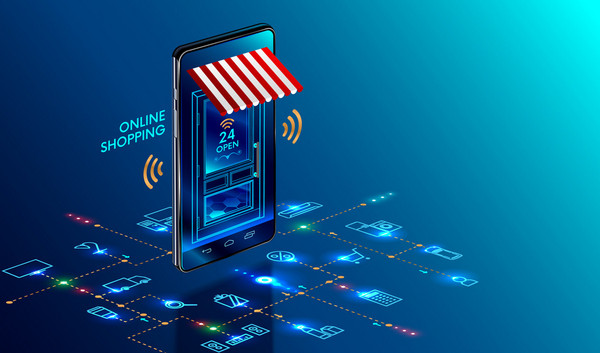How E-commerce Reshapes Pharmaceutical R&D Market
(This post first appeared in Forbes)
Pioneered by expensive and cumbersome legacy electronic data interchange (EDI) systems, the B2B e-commerce market has been evolving, showing a staggering growth rate with a projected volume of $1.1 trillion in the U.S. alone and $6.7 trillion globally by 2020.
Although the life sciences research industry has been lagging behind in adopting e-commerce tools in the past, it is now showing a growing appetite for new e-business models. According to a PwC report, 70-80% of sales and marketing in the life sciences research industry will be done through e-commerce by 2020. While the numbers might look too brave for now, the e-commerce arena is certainly “clicking” with biopharma R&D procurement leaders and investors. Take, for example, a recent launch of the AstraZeneca’s Innovation Marketplace (AIM), a $17 billion acquisition of leading e-commerce platform Sigma-Aldrich by Merck and several multimillion investment rounds raised by e-commerce marketplaces Quartzy, Scientist.com, and Science Exchange.
Biopharma companies are looking to optimize their R&D procurement strategies and are outsourcing more of their research activities to external partners due to pressing profit declines and the increasing complexity of the technological landscape. On the other hand, the life sciences tool vendors and contract research organizations (CROs) are increasingly adopting e-commerce platforms to streamline their product and service offerings in an omnichannel manner.
Let’s review some of the key e-commerce trends in the life sciences R&D market and how early adopters can benefit from embracing new e-business models.
A Shift Toward Self-Service Buying Behavior
Having grown used to everyday quality experiences with popular e-commerce brands like Amazon, Walmart, Apple, Dell and eBay, life sciences research buyers are expecting a similar consumer-like buying experience in their business-to-business (B2B) environment at work -- even for complex and expensive scientific products. They prefer having actual prices, specifications, availability, ratings and product reviews available 24/7 to make highly informed choices and buying decisions on their own. Furthermore, they want to be able to quote and order products online via desktop or mobile devices.
In a response to the evolving customer behavior, life sciences research vendors are rapidly shifting toward creating and expanding e-commerce platforms to grow online sales. For example, Crown Bioscience, Eurofins Pharma and B2S Life sciences have recently launched new e-commerce websites. Qiagen increased the fraction of online sales from less than 10% to over 20% after having launched a new e-commerce initiative in 2015. At Enamine, we observed a similar scenario, having doubled the volume of online sales over a two-year period by expanding our pre-existing e-commerce portal EnamineStore.
From E-Shops To E-Marketplaces
Life sciences research buyers and suppliers are increasingly using specialized online B2B marketplaces (e-marketplaces) to trade. For example, eight out of 10 pharmaceutical companies use Science Exchange e-commerce marketplace to access R&D services externally.
In contrast to single-vendor e-shops, e-marketplaces aggregate and match numerous buyers and suppliers.
While some e-marketplaces focus on a wide range of products and services -- like Quartzy (lab supplies, consumables, research tools) and Scientist.com (a wide range of research services) -- others focus on a specific niche product category -- like Chemspace (small molecules for drug discovery research). Since B2B marketplaces with a narrow focus are gaining momentum globally, the emergence of more niche-specific e-marketplaces is anticipated in the life sciences research market.
(Read also 19 Online Marketplaces Facilitating Life Science Research)
Research buyers use e-marketplaces to reduce time and cost for the process of finding qualified vendors, negotiating a contract and getting it set up for billings and payments. For instance, using AIM reduces a typical procurement cycle from 30-60 days down to 9.5 days, on average. The value beyond savings is the ability to access latest tools, technologies and real-time data.
Research suppliers leverage e-marketplaces for a more targeted marketing plan, reducing costs of lead generation and serving customers. Small niche suppliers can position their products before large customers with little costs involved.
A Focus On Buyer-Vendor Back-End Integration
A clear message from Advanced R&D Procurement in Pharma conference, held in 2017 in Boston, was that implementation of source-to-pay (S2P) and strategic sourcing intelligence would be key for the R&D procurement departments at life sciences organizations.
To implement the above strategy, the largest biopharma companies are often integrating their R&D procurement processes with e-procurement software vendors such as: Ariba, Coupa, Determine (aquired by Concentric in 2019), GreenWing, JAGGAER (aquiried BravoSolution in 2017), Oracle, SAP, and Zycus. They enable source-to-pay solutions by standardizing how companies set pricing, invoices, and negotiate and process POs. Suppliers who adopt punchout catalogs to streamline product via these e-procurement systems are able to increase sales, reduce costs and maintain closer relations with key customers.
In practice, a complete end-to-end integration between buyers and sellers is rather rare among B2B organizations. According to a report (via Traxpay), a majority of companies still have issues with invoice exceptions requiring manual interventions, duplicate payments and overpayments or poor management of early payment discounts. This is in line with what we observe at Enamine: Punchout integrations with some of the key customers are still partial, leading to increased error rates and operational costs. With a lot of improvements introduced lately, we expect more transactions flowing via punchout in a completely automatic end-to-end purchasing cycle in 2018.
The Future: Adoption Of New Technologies To Empower E-Commerce
E-commerce is still maturing in the life sciences research market, but it is set for rapid growth. A number of advanced technologies can add additional value for e-business models and present more arguments for the sciences leaders to become early adopters:
- Cloud-based infrastructures provide not only CAPEX and OPEX savings when hosting e-commerce projects but also adaptability to quickly support entirely new business models and sales channels, as opposed to clumsy on-premise infrastructures.
- Artificial Intelligence-based algorithms are revolutionizing big data processing, allowing companies to get advanced insights about life sciences research products in an instant.
- New data analytics technologies support e-procurement workflows with advanced insights and dynamic reporting tools to track real-time key performance indicators related to outsourced R&D investments.
All in all, e-commerce is a prominent opportunity that's quickly becoming a necessity for the life sciences R&D market.
DISCLOSURE: The author works at Enamine as Head of Ecommerce and runs EnamineStore.com web-portal.
Topics: Marketing & E-commerce

